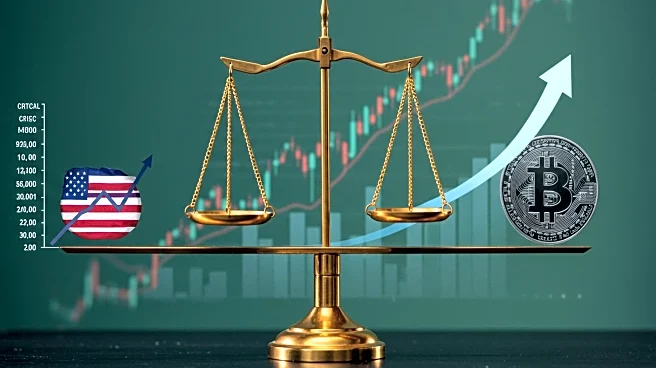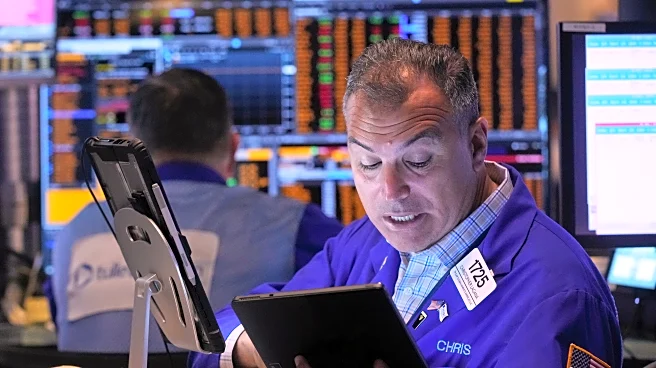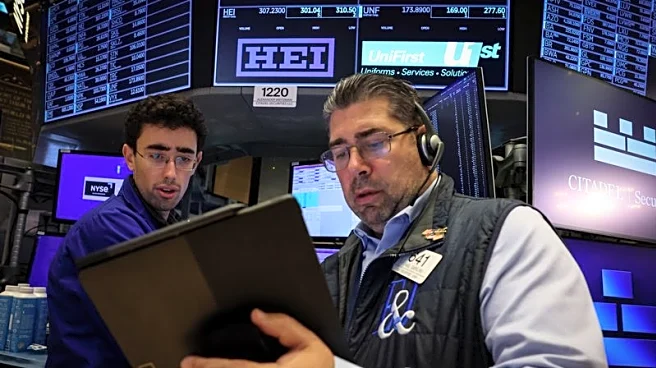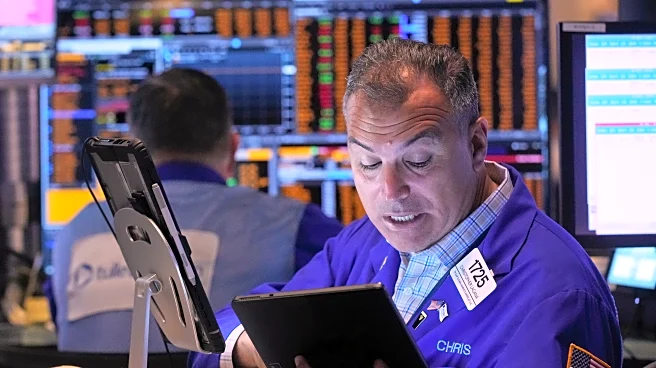What's Happening?
Federal Reserve Chair Jerome Powell's recent speech at the Jackson Hole Economic Policy Symposium indicated a potential shift in the central bank's monetary policy, which has led to a significant surge in U.S. stocks and cryptocurrencies. Powell highlighted the risks in the labor market, noting a slowdown in both labor supply and demand, which could result in layoffs and increased unemployment. His remarks, delivered amid political pressure from President Trump for rate cuts, were more dovish than expected. Although Powell did not commit to a specific policy change, he suggested that the shifting balance of risks might necessitate an adjustment in the Fed's policy stance. This was interpreted by traders as a signal that a rate cut could be announced at the Federal Open Market Committee's September meeting. The probability of a September rate cut increased to 89% following his speech. The market responded with the Dow Jones Industrial Average rising nearly 900 points, and significant gains were also seen in the S&P 500 and Nasdaq Composite. Cryptocurrencies like Bitcoin and Ethereum experienced rapid gains, attributed to improved liquidity expectations and a shift in investor sentiment.
Why It's Important?
Powell's speech has significant implications for the U.S. economy and financial markets. A potential rate cut could stimulate economic growth by making borrowing cheaper, which may encourage spending and investment. This is particularly relevant as the U.S. faces economic challenges, including those posed by trade policies and tariffs, which Powell noted are contributing to higher prices in certain sectors. The Fed's potential easing could also impact the global economy by affecting currency values and international trade dynamics. Investors in stocks and cryptocurrencies stand to benefit from the increased liquidity and risk-on sentiment. However, there are concerns about inflationary risks, especially with tariffs potentially exacerbating inflation. The divergence in views among Fed officials, such as Boston Fed President Susan Collins' reservations about rate cuts, highlights the complexity of the Fed's decision-making process.
What's Next?
The next steps involve closely monitoring the Federal Open Market Committee's meeting in September, where a decision on the rate cut may be made. Market participants will be watching for further signals from the Fed regarding its policy stance. The potential rate cut could lead to continued volatility in financial markets, with investors adjusting their portfolios in anticipation of changes in interest rates. Additionally, the Fed's policy framework review, which emphasizes a flexible approach to monetary policy, will play a crucial role in shaping future decisions. Stakeholders, including businesses and policymakers, will need to consider the broader economic implications of the Fed's actions, particularly in relation to inflation and employment.
Beyond the Headlines
Powell's comments also underscore the broader economic challenges posed by trade policies, particularly tariffs, which are contributing to inflationary pressures. The Fed's dual mandate of price stability and maximum employment requires a delicate balance, especially in the current economic climate. The potential rate cut reflects a shift in the Fed's approach, influenced by lessons from past economic events such as the 2021 inflation surge and the Great Recession. This shift may lead to long-term changes in how the Fed addresses economic challenges, with a focus on flexibility and responsiveness to evolving conditions.













